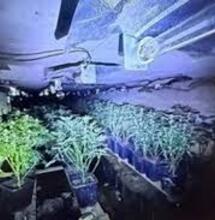Water strategy for hydro unit

I have a 12 plant hydro garden using expanded clay pellets and a pump to trickle the nutrient solution. Do I need to let the nutrients trickle 24 hours a day?
I have a 12 plant hydro garden using expanded clay pellets and a pump to trickle the nutrient solution. Do I need to let the nutrients trickle 24 hours a day?
I have a 12 plant hydro garden using expanded clay pellets and a pump to trickle the nutrient solution. Do I need to let the nutrients trickle 24 hours a day?
Kanux
Yes. Trickle the water almost continuously. The roots metabolize and absorb water continuously since the plant continues life processes and growth both during the light and dark period. They absorb oxygen (O) from, and release carbon dioxide (CO2) into the water.
When water trickles over the pebbles they become covered in a thin film of water that has a high surface to volume ratio; a high proportion of the water has contact with air. The high surface/volume ratio facilitates the transfer of CO2 to the air and dissolving O2 from the air to the water. The large air spaces between the pebbles allow a lot of air movement so the roots always have access to O2.
When water is pulsed so the stream ends and the water drains, a vacuum is created, which draws new air into the container. Then the stream begins again and creates a venturi effect, pulling air out, and of course, drawing new air in.
I had a system in which the pebbles received a stream of water from spaghetti tubing without drippers attached. The water was on for 5 minutes and then off for 1 minute. The containers were placed in a tray that that had a drain that was raised 5 cm, so they sat in a pool of water that was always moving and draining into the reservoir below. This served two purposes: It created a redundancy- if the pump should stop unexpectedly, there was enough water in the reservoir to keep the plants unstressed for at least a day. The other is that the roots grew out of the containers and slurped water directly from the reservoir.
The roots that grew into the water looked different than the roots in the clay pebbles. They were thicker and did not have the fuzzy root-hairs that grew from the roots in the container. They looked very healthy because they were growing in oxygenated nutrient-rich water. These roots spurred canopy growth.



